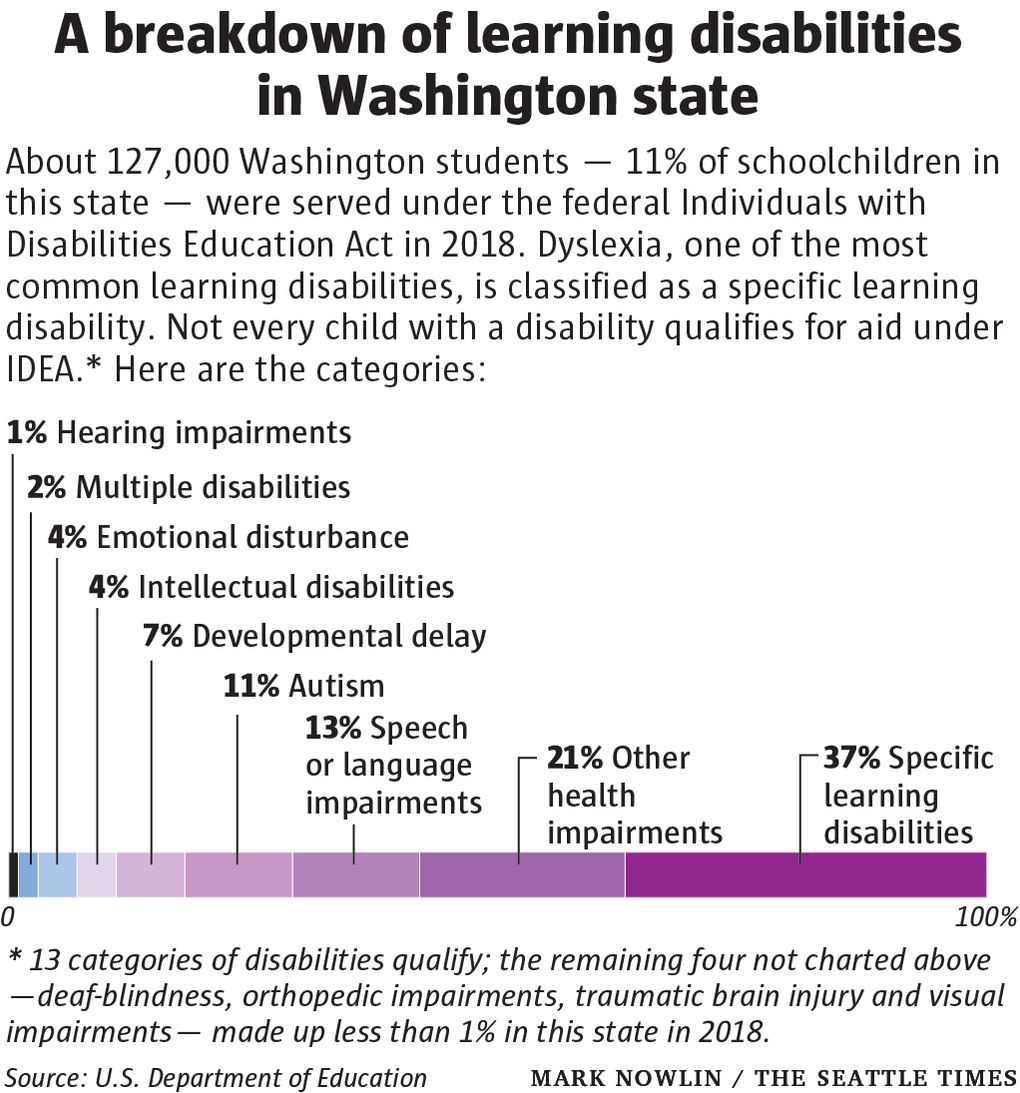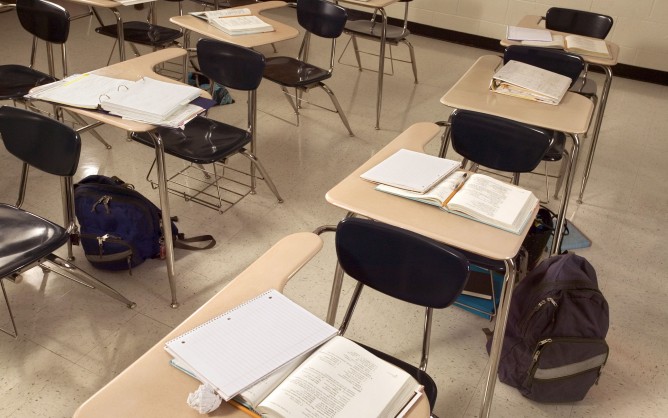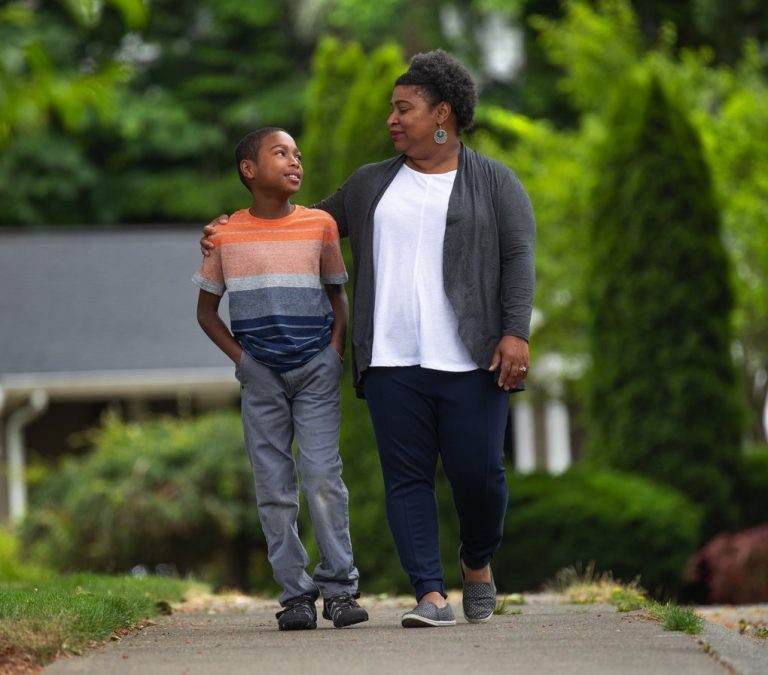By: Dr. Ifeanyi-Allah Ufondu, September 12, 2022
Black males in grades 3 to 8 are often incorrectly assigned to special education, but other supports could better help them succeed in school
Black male students are far more likely than their White peers to drop out of school—only about 60 percent earn high school diplomas. In part this may be because Black males are three times more likely to be suspended than White males. But research shows that a big part of the problem young Black males have with schools is that they are far more likely than their White peers to be placed in special education classes.
This is a tragedy for the students who get this placement incorrectly because their access to rich educational experiences can be sharply limited as a result. This misidentification affects their peers as well, who see that Black males like them are often wrongly underestimated and undervalued. It also negatively impacts teachers by hindering their ability to engage and teach all students. And if school districts are not strategic and culturally aware, the rates at which Black male students are marginalized may get worse as many schools return to in-person learning after almost a year and a half.
Because special education identification practices and patterns vary widely in different states and school districts, how data is interpreted varies considerably. The tendency in many cases, particularly now, is to see any learning loss that students—and particularly Black males—have experienced as something that is cognitive when it is instead often due to limited access to certain resources. In 2018 about 30 percent of Black families didn’t have broadband internet service, meaning their children did not have either access to the rich educational experiences available online or practice navigating the internet, which is a valuable skill in itself.
Stopping the overidentification of Black male students for special education starts with understanding access deficits like this—and not mistaking them for cognitive deficits. What can educators, administrators, and school districts do to better understand access deficits? Better professional development is needed to help teachers and administrators effectively engage and teach Black male students.
The five-step process for school leaders presented here can help bring about equity and fairness in educating Black males students, and help decrease the process of overidentifying them for special education.
1. EDUCATE STAFF
Talk to the entire staff about Black male students and why the way teachers approach these students needs to change. Use the term Black often to underscore your intentions—while it may make some educators uncomfortable, that’s to be expected. Educators often say they don’t see color when they are educating students—please remind them that they should see it.
Jawanza Kunjufu, author of Black Students, Middle Class Teachers, wrote: “The most important factor impacting the academic achievement of African American children is not the race or gender of the teacher but the teacher’s expectations.” What teachers believe and how they perceive Black male students has a large and fundamental impact on how successful those students will be in school. How we engage students sends a message to them. If a teacher sees behaviors that they don’t understand, they should seek advice from colleagues to become aware of the cultural norms underlying these behaviors.
2. IDENTIFY STUDENTS WHO NEED SUPPORT
About 13 percent of the student body in public schools receives special education services. Look at the percentage of Black male students in your school who are identified for special education, and compare that to the demographics of your school. If the number of Black male students being identified is high, have a conversation about changing the criteria, particularly now as so many have been away from school for over a year.
Form a committee to go over all the data you have, with an eye to identifying the supports that struggling students will need—the goal here is not to assign them all to special education, but to find specific supports for literacy, math, etc., that will help them make needed gains. Include general and special education teachers, administrators, paraprofessionals, ancillary staff, and a nurse. Keep the committee at odd numbers for voting purposes. Look at grades and state and local assessments, and thoroughly examine discipline referrals that were written about behavior.
Examine when those referrals were written—they could indicate what the students’ triggers were. This part is critical: If educators are able to identify when, why, and where certain behaviors occurred, they may be able to better prevent them from happening. Having a committee allows various points of views and different perspectives to be heard, which will help you avoid assigning students to special education for disciplinary issues when they could be better supported in other ways.
3. SUPPORT STUDENTS
Once the students who need help are identified, start matching interventions with their needs. The key is to make certain of three important points:
- Make certain help is communicated by first identifying strengths the students have, and be sure not to suggest the students are slow—this automatically promotes a defensive posture by students.
- Providing students with culturally sensitive and responsive reading materials will promote a greater acceptance of reading, if that is a deficit. Dr. Alfred W. Tatum, a professor of literacy, has written that texts that promote cultural uplift and economic advancement could help foster a desire and love for reading in Black male students.
- Set goals that are reasonable and attainable—1.5 years of growth in reading and math would help students who are performing below their peers improve their chances of narrowing the achievement gap. This is a lofty goal, but with the proper interventions it should be possible.
4. ASSESS STUDENTS
How we assess students is central to evaluating what is working and what needs to change. We often use standard forms of assessments to show us how students are performing, but as schools respond to the impact of Covid-19 on students who may be achieving at lower levels than expected, assessments need to include a more subjective lens as well.
Ask students what is working—engage their viewpoint more now than ever before. Their thoughts, what they have been exposed to, and their emotional state, all matter in how they interact with the texts and subjects they’re learning.
For example, a teacher may be doing a lesson in math on measurements and connecting it with cooking. A student may respond not with a math answer but with what life is like in their home, where they lack food or ingredients to make a certain meal. Or perhaps the teacher is having a math talk and asks students to come up with various ways to arrive at the number 20. Students may begin to talk about the number of people in their family who got sick as a result of Covid-19. Different topics may elicit unpredictable responses from students, and teachers should make space for those responses before moving on with the lessons.
5. EVALUATE WHAT WORKS
The evaluation stage should be ongoing. We educators often want results immediately to determine if our interventions and lessons are working, but the minds of students are constantly evolving. Some students may demonstrate that they are progressing at an optimal level, and others may not demonstrate that at one point in time—that doesn’t mean the intervention is not working. While we must have standards and time frames in which we evaluate, it’s important to be flexible enough to give students more time, if it’s clear there is some progress.
Keep in mind the phrase access deficits. Many students did not have access to the resources that others had over the last year and a half, and understanding that can result in a more relaxed classroom environment, one that can prompt students to work harder and feel they are valued and supported.
Once you and your team have evaluated the data and determined what has been effective, duplicate those efforts and share the data with all the staff members who help educate the students, including paraprofessionals. The need for fidelity is at an all-time high.
There are far too many Black male students underperforming in schools, and the five-step plan here is one attempt to change this. The work starts with recognizing that this problem still exists, and realizing that the decisions we make now will impact these students for the rest of their lives.
Here’s Dr.Ufondu’s recommendation for an excellent read:

My father and society have taught me that it is rude to offer advice when no one asks for it. But Black folks aren’t talking about disabilities with each other, and that silence is negatively affecting our children. And, while many of us in the Black community are too ashamed and afraid to talk openly about disabilities, our children with disabilities are losing out on opportunities for early intervention services that could change their lives.
We have to talk. I am going to be “all up in your business” and offer unsolicited advice to parents of children with disabilities. I am being a “Nosy Nelly” because I have to.
AS BLACK PARENTS OF CHILDREN WITH DISABILITIES, WE HAVE TO MOVE QUICKLY THROUGH OUR GRIEF TO GET OUR CHILDREN WHAT THEY NEED.The funds for all services for children with disabilities are just a small slice of the pie when it comes to state and federal budgets. So as Black parents of children with disabilities, we have to move quickly through our grief to get our children what they need. We have to come out knowledgeable and ready to fight for our piece of the pie.
TO FIGHT FOR OUR KIDS, WE NEED TO SAY GOODBYE TO STEREOTYPES
Disabilities are not bad; disabilities are differences. Before eyeglasses were invented, many of us would have been legally blind and thus disabled. I know I would have been. If I drive without my glasses, I am going to jail—because I can’t see a thing without my glasses!
Other kinds of disabilities, even the ones we think are most severe, can work the same way as glasses. There are many available tools like glasses, speech therapy starting at age 2 for example, for each disability. Technology is getting us even closer by creating new tools, from Braille smartphones to stair-climbing wheelchairs.
DISABILITIES ARE NOTHING TO FEAR OR BE ASHAMED OF, AND WE CANLEARN NEW LANGUAGE TO REFLECT OUR NEW ATTITUDES.Disabilities are nothing to fear or be ashamed of, and we can learn new language to reflect our new attitudes. It’s way past time to dump words like “retarded” or “handicapped.” All the “short bus” jokes and “slow-talking jokes” from comedians like Ricky Smiley have fostered an image of people with disabilities that is not only hurtful, it’s stigmatizing and wrong. Many people with physical and mental disabilities live full, happy, self-sufficient, lives like everyone else. However, in order to live independent lives, they need some supports and accommodations to help them.
PRAYER IS NOT A SUBSTITUTE FOR SERVICES FOR CHILDREN WITH DISABILITIES.And we have to address the elephant in the room. Black people, prayer is not a substitute for services for children with disabilities. Prayer is important and helpful for the spirit. I pray over my children daily. However, prayer alone is no substitute for experts who can help parents understand their child and provide therapies and tools to meet their needs. I pray for service providers and knowledge to navigate the crazy system.
When you are dealing with developmental issues in young children, don’t listen to your momma, your pastor or even your best friend. Listen to doctors and specialists, because disabilities are health conditions that require experts.
Health conditions can be managed and quality of life can be improved using treatments and practices that have been tested and proven effective. When in doubt, use the medical rule: if you were having health problems, would you let the person offering advice serve as your medical doctor? If not, they are not the ones to take advice from regarding disabilities either.

KNOW HOW KIDS GROW
Knowing how children really develop and grow is essential to spotting problems and supporting our children when they need help. Remember the Katt Williams comedy special, where he joked to the lady in the store yelling at her child for wanting candy by saying, “your child is 2, they are supposed to want candy? That joke is for all of us. As a community, we need to learn about developmental markers. We need to learn what is behaviorally appropriate at certain ages. Kids aren’t supposed to sit still and quiet at age 2, and asking them to do so is harmful. Also, if your child is 3 years old and cannot speak in short sentences, that is a sign of a speech delay that needs early intervention. Speech therapy is scientifically based and it works! If your child needed glasses, you wouldn’t be too ashamed to take them to the eye doctor. You also wouldn’t wait to see if they grew out of not seeing. Don’t do that with speech either. The time from 3-6 years of age is magic. Early interventioncan turn everything around.
Next, stop calling kids bad! I struggle with this one, a lot, because I have a “busy, not bad” child. But this idea of kids being “good” or “bad” is hurting our children and us. All kids exist on a behavior spectrum. For kids with disabilities, that may show up looking like they are “bad” when in reality they have a disability. Sometimes “bad” is actually “tired,” or the place is too noisy.
When my daughter starts screaming in the mall, I know she is having a sensory overload. I don’t yell. I try and find a quiet space, or I cover her ears and tell her to close her eyes, and I hum and rock her until she calms down. I’ve had Black folks looking and making comments that she needs a spanking. She doesn’t, nor do other children with disabilities. They need to be comforted. Children with special needs are not giving a hard time, they are having a hard time.
WE BLACK PARENTS MUST BE WARRIORS FOR OUR CHILDREN
If your child does get a diagnosis and needs services, you will have a lot to learn. You will have to get ready to fight. And you will need to take good care of yourself so you can fight for your child.
WHEN IT COMES TO ADVOCATING FOR CHILDREN AT SCHOOL, WE DON’T HAVE THE LUXURY OF “RESPECTABILITY POLITICS” OR USING OUR “WHITE VOICES AND ATTITUDES.”If your child has an Individualized Education Plan (IEP), get an advocate or a lawyer right away. This process is brutal. School and district staff are rude and disrespectful to the richest and Whitest folks, so imagine how we get treated. When it comes to advocating for children at school, we don’t have the luxury of “respectability politics” or using our “White voices and attitudes.” This is the time to go full momma bear and fight the school for the tools your child needs!
And, we can’t do it alone. We need an army behind us! We need support groups. Having a special needs child is exhausting in a different way. We need to be with people who understand because they have lived this struggle too. Online groups are great for this! There are groups for Black parents of children with autism, children with Down syndrome and more. If there isn’t one that fits your specific situation, then try to start one in your community.
One of my personal heroes is Debra Vines. After her son was diagnosed with autism she realized the lack of support and information in our majority Black community. So she and her husband started The Answer, Inc., which has become a leader in educating Illinois families about autism.
IN ORDER TO FIGHT FOR THE RIGHT SERVICES FOR YOUR CHILD, YOU NEED TO BE MENTALLY AND PHYSICALLY STRONG ENOUGH TO HELP THEM IN THIS LIFELONG BATTLE.Lastly, having a child with disabilities is hard for both the child and the parents. I highly recommend that you get therapy for yourself. In order to fight for the right services for your child, you need to be mentally and physically strong enough to help them in this lifelong battle. This means you have to take care of your own mental health, too. Fighting for your child’s rights to special education is probably the toughest of all school fighting. You need to be at your mental, physical and emotional best to even have a chance of winning what is legally owed to your child.
It is imperative that Black parents fight for services for our disabled children. Seriously—rich White people have the money, resources, connections and knowledge to put up a fight for their children, and yet, many of their children still aren’t getting the right services. For us, it is doubly difficult to get services. That’s why we have to start services as early as possible. Early detection and intervention is crucial to successful outcomes. If you are a parent of a disabled child, start your service now! I’ll be praying that you find all the resources you need for your child to live a quality, happy life with accessible education.

At age six, most young children are entering first grade, but not for the extraordinary Joshua Beckford.
Living with high-functioning autism, the child prodigy from Tottenham was, at the age of six, the youngest person ever to attend the prestigious Oxford University.

But he has his father to thank for this incredible feat. At just 10 months old, Beckford’s father, Knox Daniel, discovered his son’s unique learning capability while he was sitting on his lap in front of the computer.
With the keyboard being the child’s interest, Daniel said: “I started telling [Joshua] what the letters on the keyboard were and I realized that he was remembering and could understand.”
“So, if I told him to point to a letter, he could do it… Then we moved on to colours,” Daniel added.

At the age of three, Beckford could read fluently using phonics. He learned to speak Japanese and even taught himself to touch-type on a computer before he could learn to write.
“Since the age of four, I was on my dad’s laptop and it had a body simulator where I would pull out organs,” said Beckford.
In 2011, his father was aware of a programme at Oxford University that was specific to children between the age of eight and thirteen. To challenge his son, he wrote to Oxford with the hopes of getting admission for his child even though he was younger than the age prescribed for the programme.
Fortunately, Beckford was given the chance to enroll, becoming the youngest student ever accepted. The brilliant chap took a course in philosophy and history and passed both with distinction.

Beckford was too advanced for a standard curriculum; hence he was home-schooled, according to Spectacular Magazine.
Having a keen interest in the affairs of Egypt throughout his studies, the young genius is working on a children’s book about the historic and ancient nation.
Aside from his academic prowess, Beckford serves as the face of the National Autistic Society’s Black and Minority campaign. Being one with high-functioning autism, the young child helps to highlight the challenges minority groups face in their attempt to acquire autism support and services.
Last month, the wonder child was appointed Low Income Families Education (L.I.F.E) Support Ambassador for Boys Mentoring Advocacy Network in Nigeria, Uganda, Ghana, South Africa, Kenya and the United Kingdom.

BMAN Low Income Families Education (LIFE) Support was established to create educational opportunities for children from low-income families so that they have a hope of positively contributing to a thriving society.
Beckford will further hold a live mentoring session with teenagers and his father, Daniel, will facilitate a mentoring session with parents at the Father And Son Together [FAST] initiative event in Nigeria in August 2019.
In 2017, Beckford won The Positive Role Model Award for Age at The National Diversity Awards, an event which celebrates the excellent achievements of grass-root communities that tackle the issues in today’s society.

Described as one of the most brilliant boys in the world, Beckford also designs and delivers power-point presentations on Human Anatomy at Community fund-raising events to audiences ranging from 200 to 3,000 people, according to National Diversity Awards.
For a super scholar whose brain is above most of his peers and even most adults, Beckford, according to his father, “doesn’t like children his own age and only likes teenagers and adults.”

Parenting a child with high-functioning autism comes with its own challenges, his father added.
“[Joshua] doesn’t like loud noises and always walks on his tip toes and he always eats from the same plate, using the same cutlery, and drinks from the same cup,” he said.
He is, however, proud of his son’s achievements and believes he has a bright future ahead.
“I want to save the earth. I want to change the world and change peoples’ ideas to doing the right things about earth,” Beckford once said of his future.
HIGHLAND PARK, Ill. — A few years ago, Mitchell Robins wasn’t able to tell anyone precisely what he was thinking. He lost the ability to speak when he was 4 and relied primarily on a system of pictures and limited sign language to tell his parents and caregivers what he wanted to eat or when he felt sick or how he wanted to spend his time. Then his parents realized he could spell.
Now Mitchell, 17, communicates deliberately, pointing letter by letter to a board that displays the alphabet. Ask him a question and his expression will flit between deep concentration and a jovial grin as he slowly spells his answer. Mitchell, who has autism and is nonverbal, said using spelling-based communication has changed his life.
“It changed everything because I could get my wants and needs met,” he spelled during a recent interview at his home in Highland Park, curled up in a couch corner while one of his therapists held the board at his eye level. “I am very happy people are finally figuring out how to reach people like me because it is a human rights issue we need to solve.”
He was able to tell his parents that he wanted to start taking classes at the local high school and meet with friends at a coffee shop, where they talk about normal teenager things. Realizing he understood much more than they had ever thought, his mom said they went from reading him Dr. Seuss to Harry Potter “basically overnight.”
Last March, he started a blog about his life. By telling his story, Mitchell hopes to show the world that those who communicate differently shouldn’t be underestimated. He already has readers from nearly every continent.
“It shows you the huge capabilities of these individuals with autism who are nonverbal,” said Dr. Ifeanyi Ufondu, Ph.D., psychologist and founder of Beautiful Minds Inc. – Advocacy and Special Needs Solutions, as he spoke about the clients he advocates for. “They have huge capabilities, but we just don’t know how to access it, and this is an easy way to access it.”
Around seven years ago Susan Robins attended a presentation about a therapy called Rapid Prompting Method, which teaches nonverbal individuals to communicate by spelling. The therapy teaches students to answer fact-based and yes-or-no questions on a plastic alphabet stencil board before building up to open-ended questions on a flat paper-like letterboard, Susan Robins said.
Eventually, many spellers transition to independent spelling on an iPad keyboard or computer keyboard.
She was skeptical. In previous therapies, Mitchell hadn’t been able to select from a set of cards which one showed a happy face. When she voiced concern that Mitchell would be able to learn spelling, the parent of one of the presenters knowingly told her, “Oh, he knows.”
It didn’t take long for her to realize that Mitchell had been absorbing the world around him by reading street signs and books and even listening to his dad help his sister with algebra homework. He understood everything, he just didn’t have a way to tell them, she said.
“He was looking all the time, reading all the time,” she said. “The words are there, they’re all over the place. They’re outside the windows when you’re driving in your car, they’re in books and newspapers you have in the house. He taught himself to read.”
When he was first starting the therapy, he spelled to his sister that he loved her for the first time. Now he writes his mother letters thanking her for all she does. When they started to practice math, Mitchell already knew how to solve equations, he just needed to learn simple tables that he hadn’t been taught in school, she said.
Last semester, Mitchell earned a B+ in the business class he took at Highland Park High School, on top of a full online course load including advanced physics and social studies. He particularly enjoys learning about the civil rights movements of the 1960s.
There has been little research to back up anecdotal success stories for this type of therapy, but that doesn’t matter to Susan Robins after seeing the difference it’s made in her son’s life.
“It really changed things. Before, we loved him of course, but we would dress him and feed him and try to get him to smile, all these things but we didn’t know him really,” Robins said.
Mitchell sets his own goals during sessions with Taylor Janisch, one of several therapists who help him with schoolwork, life skills and communication. Recently he’s been practicing writing blog posts with fewer breaks and holding longer conversations. At the end of every session they talk about a topic of his choosing, Janisch said, adding that she considers Mitchell a friend.
No one touches Mitchell’s arms or hands or moves his board as he spells. Someone, usually a therapist or parent, holds the letterboard up to his visual field. His mother said he’s come a long way since he started the therapy to having what would now be considered open communication. It took Janisch over a year of building trust to become “fluent” with Mitchell.
“There are lots of people in the school system that are his age that are being asked, ‘show me the orange, what color is this, point to the spoon,’” Janisch said. “Can you imagine if you couldn’t speak or communicate at all, but you’re still you inside of yourself? You wouldn’t know what to do. All these people are trapped.”
After mastering the letterboard, Mitchell started learning to type on an iPad that speaks what he writes. He types his blog posts on a computer keyboard by himself. Spelling can be exhausting for people who struggle with motor skills, so he takes breaks, frequently flopping down on a blue beanbag in the corner of the office where he writes.
For quick requests, such as a bathroom break or drink of water, Mitchell uses sign language.
Mitchell said he blogs to help families of other people with autism who are nonverbal understand their capabilities. In a recent post, he wrote about the frustration he feels when people talk down to him because they assume he can’t understand what they’re saying.
Sometimes readers leave messages asking about the therapy and encouraging him to keep writing in the comment section of the blog. Mitchell said reaching people feels “amazing because I am making a difference.”
“I think people need to stop underestimating us because our perspective is as important as everyone else’s,” Mitchell spelled. “We are intelligent and amazing people who deserve the benefits of open communication.”
The Individuals with Disabilities Education Act provides parents certain options if they’re unsatisfied with the education that their children with disabilities are receiving, but government investigators say only some families are able to take advantage.
Race and income level are playing a significant role in whether families pursue due process or take other steps toward dispute resolution allowed under federal special education law, the Government Accountability Office found.
The nonpartisan investigative arm of Congress analyzed data on due process complaints, mediation requests and state complaints in five states — Massachusetts, Michigan, New Jersey, Ohio and Pennsylvania — for the 2019-2020 school year

School districts located in very high-income areas were more than four times as likely to have had at least one mediation request or due process complaint as compared to very low-income districts, GAO found. Wealthier areas also recorded higher numbers of disputes overall.
Similarly, investigators noted that school districts with very high numbers of minority students generally had less dispute activity, except in regards to due process.
Disability advocates and other stakeholders told GAO investigators that several factors affect the likelihood that parents will pursue dispute resolution. In particular, the cost of attorneys and expert witnesses is a challenge. At the same time, parents often feel like they are at a disadvantage going up against their school district, fear retaliation or lack time off from work to attend hearings, according to the report.
U.S. Rep. Bobby Scott, D-Va., who chairs the House education committee and was one of the lawmakers who requested the GAO investigation, said it represents a “wake-up call to school districts, states, advocates and policymakers.”
Dr. Ifeanyi Ufondu, owner of Beautiful Minds Inc.- Advocacy & Special Needs Solutions of Beverly Hills, CA and Dallas, TX implores, “The data clearly show that the civil rights protections provided under the Individuals with Disabilities Education Act (IDEA) are not equally accessible to all students,” Ufondu said. “I hope this report starts an important and overdue conversation about how all of us can work together to address the barriers that are preventing many students and families from advocating for the education that they are entitled to receive under federal law.”
Dr. Ufondu’s Back to School Tips for Parents
Model confidence, create structure, and get to know the new teach
By Dr. Ifeanyi A. Ufondu, Ph.D.
Every child faces challenges when heading back to school. But back-to-school time can be exceptionally difficult for the 20 percent of children who suffer from a mental health or learning disorder.
The school environment demands many things that summer activities don’t — the ability to sit still; get organized; stay on task; and adapt to a new, highly structured daily schedule. School also requires kids to separate from their parents and interact with peers — enormously challenging tasks for any child with anxiety.
Here are six things parents need to know about starting school with vulnerable children:
1. Mental health problems emerge at back-to-school time.
Children with special needs require a lot of help learning how to manage a new schedule. As a parent, you can ease your child’s anxiety by modeling confidence and calm behavior, and by imposing structure in family life (mealtime, homework, and bedtime routines).
But if your child shows signs of extreme anxiety and has unusual difficulties in school, you should immediately discuss your concerns with your child’s teacher as well as a mental health professional, someone who can advise on whether a child’s problems are normal and age appropriate or require further evaluation.
2. Kids’ brains are changing dramatically.
Profound changes occur in the brains of children, particularly as they enter their teens. The teen brain starts “pruning”—strengthening some synapses and eliminating many others. A temporary imbalance of this pruning in certain areas of the brain has been linked to teens’ erratic and risky behaviors, as well as the onset of anxiety disorders, depression, and substance abuse.
It’s important to keep communication open at this vulnerable time, when teenagers are starting to look like adults, and think they are adults, but may not have the skills to manage stress. If you haven’t already started setting time aside each day to talk to your child about challenges and new experiences at school, now is the perfect moment.
3. Anxious parents send anxious kids to school.
Anxiety disorders run in families. Plus, anxious people tend to marry other anxious people; children with two anxious parents are at especially high risk. But genetics are just one factor. Environment is another. Kids really are like sponges, absorbing the energy and adopting the behaviors around them.
One of the most helpful things you can do is model calm, confident behavior, particularly while helping a child get ready for school. A child usually starts school no calmer than her least-relaxed parent.
4. Teachers matter, maybe even more than you think.
Teachers get to know a child’s family through the child’s eyes, and they get to know how a child behaves without his parent present. This means parents can get all kinds of information about a child from his teacher—information about learning difficulties and peer problems as well as academic achievements and close friendships. Teachers are allies, and you should talk to them regularly.
Good questions to ask include: How is my child doing? Do you have any concerns about his social or academic skills? Do you think he needs my help with anything?
5. Homework time is crucial.
Young children with learning difficulties, as well as those without any documented problems, can benefit from their parents’ involvement during homework time. Parents should set aside time for a structured “homework session” each evening.
A good routine might start like this: Create space on a desk to work; help him clean out his backpack; review the day’s assignments; and discuss the homework as well as any questions about it. You can observe your child’s learning strengths and weaknesses this way while also reinforcing good study habits. Be positive and encouraging.
6. Don’t jump to conclusions.
Kids grow and develop at different rates. Ideally, a child will acquire various skills within expected time periods, but she may develop more quickly in one area than another. Parents often worry when, for example, one 5-year-old can read fluently while another can barely sound out words on the page. But a lag in one area of development doesn’t mean a child has a disorder. If you think there might be a problem with your child’s development, talk to her teacher. A seasoned teacher, with about 10 years of experience, can frame your child’s progress in relation to as many as 300 other kids. Good teachers are invaluable allies.
Something is not right.
When Luckisha Phillips’ son Jayden picked up a pencil in kindergarten, his letters often came out backward and inverted, so illegible that his mother thought something was wrong with his vision.
Handed a set of crayons, Ammerine Dellenbaugh’s bright, chatty son Creede refused to use them to draw or write. Instead, he’d line them up by color, or just scribble.
As 6-year-olds, Stacey Vandell’s twins, Jake and Ryan, couldn’t remember their ABCs, didn’t know why the days were different, and couldn’t grasp the concept of time.
Over and over, these women found themselves saying the same thing to teachers and principals:
Something is not right.

But when it came to putting a label on these challenges — to getting the type of educational testing that could open the door to more appropriate schooling — they felt like they were on their own.
They hired private neuropsychologists, speech and vision experts. They spent thousands of dollars to diagnose learning disabilities they say their schools should have identified much earlier.
Educators have long known that dyslexia and other learning disabilities can have devastating impacts for students if not diagnosed and addressed early. In Washington, nearly 48,000 children in 2018 were identified as having a “specific learning disability,” which includes dyslexia, dyscalculia and dysgraphia. It is the most common category of learning disability.

Those numbers likely understate the problem because many children aren’t diagnosed. It’s estimated that as many as one in five children have some degree of dyslexia.
Yet most Washington districts decide if a child is eligible for services using a model that is not supported by research.
The Seattle Times spoke to dozens of parents who hit brick walls when trying to get the help they needed for their children. Their experiences point to a pervasive problem in Washington: Schools are failing children who learn differently by taking too long to address problems.
Their complaints have common themes:
- Teachers assured them their children would grow out of the problem.
- Schools were reluctant to test until students started failing, forcing many parents to pay for private testing.
- Interventions, especially for reading, were often too little and too late.
Washington ranks poorly on federal special-education reports because of its low student outcomes and segregated classrooms. It’s hard to know how much of the problem is due to a lack of diagnostic testing, but even state officials acknowledge that they’re not doing enough to identify reading problems like dyslexia, which affects as many as one in five children.
That problem is compounded by the fact that Washington — like most states — has a shortage of both special-education teachers and school psychologists. And although the Legislature boosted special-education funding by millions of dollars this year, it came up far short of what advocates wanted.
How special education works
Special education has a complex language all its own, girded by federal statutes that can feel calculated to confuse as much as help parents of children like Jayden, Creede, Jake and Ryan.
The federal Individuals with Disabilities Education Act (IDEA) gives a child with a disability an explicit right to schooling that suits their needs, but not every child who has a disability will qualify for help. The disability has to affect educational performance, and overcoming the disability has to require specially designed instruction, said Glenna Gallo, assistant superintendent of special education for Washington’s Superintendent of Public Instruction.
The law recognizes 13 categories of disabilities. Some are caught early, often by a doctor. Others are invisible, apparent only after a child with average or above-average intellectual ability falters in the classroom; they include difficulties with reading (dyslexia), calculations (dyscalculia) and writing (dysgraphia).
Luckisha Phillips and her husband, John, assumed their school would want to investigate why Jayden couldn’t remember his ABCs or write his letters. Instead, she says, they were only interested in whether he was legally entitled to help.
That’s not surprising — that’s what the federal law requires.
Most Washington school districts identify students with these types of learning disabilities through an intellectual ability test, or IQ test. This method, known as the “discrepancy model,” measures whether there is a substantial difference between a student’s intellectual ability and scores in one or more academic areas, such as reading. In other words, a student must reach a certain level of failure before qualifying for help.
But research has debunked this method as a poor model with no basis in science, said Dr. Ifeanyi Ufondu Founder of Beautiful Minds Inc.- Advocacy & Special Needs Solutions. Ufondu called it a “wait-to-fail” approach.
Aira Jackson, director of English language arts for the state superintendent’s office, acknowledges that research calls into question the validity of the discrepancy model.
CHICAGO (CBS) — Parents of elementary-aged special needs students who have been strangled, beaten, and dragged at the hands of their teachers are speaking out about what they say is really going on in some Chicago Public Schools classrooms.
Those families will be at the Dirksen Federal Building courthouse Tuesday morning, demanding investigations and answers from the Cook County State’s Attorney’s office and Chicago Police Department.
Jamari Black is 11 years old, and he’ll never breathe on his own again.“He said, ‘Mommy, I don’t want to go to school tomorrow.’ He said, ‘I’m tired of them messing with me at this school,’” Jamari’s mom said.

Jamari didn’t want to go back to school, where he said he was constantly picked on by students and teachers alike. The fourth grader attempted suicide. Deprived of oxygen for more than 11 minutes, he suffered a traumatic brain injury and more, according to family attorney Jon Erickson.
He will need care for the rest of his life.
“It’s child abuse is what it boils down to,” he said.
CBS 2 first told this story in April, and now there are more federal lawsuits filed against CPS.
“Chicago Public Schools is aware of it. The Chicago Public Schools have been put on notice about it,” he said. “And the Chicago Public Schools has chosen to ignore it, and so it continues to happen.”
Erickson represent three other families.
One is the family of a special needs student at Carter G. Woodson South Elementary school, just like Jamari. Erickson says he was dragged headfirst down a flight of stairs and choked by a special needs teacher, who was fired and criminally charged.
Another family is at South Shore Fine Arts Academy where the dean of students was arrested and charged with aggravated battery for choking a special needs student, according to Erickson.
A third family Erickson works with is that of a second grade special needs student at Horizon Science Academy, a public charter school outside of CPS. The student was forced to sit facing the wall of the classroom for months, according to Erickson.
Those cases and more are behind the organized protest outside federal building Tuesday morning.
“Each of these incidents have been reported by the parents, and police reports have been made with no follow up,” Erickson said.
He said now it’s time someone listens.
“Tomorrow we’ll be calling on [Cook County State’s Attorney] Kim Foxx to do her job and to investigate this,” he said. “She has been silent on these issues and is aware of them.”
The group is planning to be at Dirksen Federal Building before 11 Tuesday morning.
Erickson said his next step is to reach out to Mayor Lori Lightfoot.
The official spokesperson for Horizon Science Academy McKinley Park, Dr. Christopher Murphy, responded to this story (and the information attributed to attorney Jon Erickson and the federal lawsuit) with the following;
“The student involved in the situation does not receive any special education services,” and “The family has long been involved with the school on providing a safe and secure location for the student to learn and be active within his classroom. By inferring that he sits in the corner paints an ugly and unfair image- while he does receive preferential seating in the classroom as an intervention for his ongoing disruptive behavior, the student fully participates in group activities and receives all opportunities and supports to be successful in school.”
Chicago Public Schools spokesman Emily Bolton said in a statement: “CPS is committed to fostering safe and welcoming learning environments in all schools, and the district has no tolerance for adults who harm or fail to protect students. All allegations of bullying and student harm are taken seriously by the district, and we are fully committed to ensuring all students are supported and adults are held accountable.”
The district says it is limited in what it can provide due to student privacy law. It does confirm district representatives did communicate with Jamari’s family following the incident.
“This is a horrible tragedy, and the thoughts and prayers of the Chicago Public Schools community are with Jamari and his loved ones. The allegations that have been made are highly concerning, and the district is conducting a full investigation,” Michael Passman said in a statement in April.
The district previously said it launched an investigation, reached out to Jamari’s family to provide support, and deployed crisis assistance resources to students and staff at Woodson.
The district cited its anti-bullying policy, saying it does not tolerate bullying or harassment in any form and CPS will hold any adults accountable if it is determined they violated district policy.
This week Dr. Ifeanyi Ufondu, founder of Beautiful Minds Inc. – Advocacy & Special Needs Solutions of Beverly hills, CA is in London doing research on on the correlation between Special Needs issues in the U.S. vs. London, U.K. What he discovered was fascinating… Almost one in five primary school children in England with special educational needs have been left in limbo after local authorities failed to provide them with a secondary school place, experts have said.
At least 2,336 special needs children who are due to start secondary school in September were not given education plans before the legal deadline, according to data released under freedom of information laws.
The uncertainty about what school they will go to and whether their support provision will be cut has left vulnerable children crippled with anxiety, lawyers working with families involved said.
Families living in areas that missed the 15 February cut off date might not get the chance to appeal decisions about what support their children receive before the new term starts.
Education solicitor Samantha Hale from Simpson Millar, explained to Dr. Ufondu, “There has to be a proper transition plan in place, and obviously issuing them late puts that in jeopardy.
“Some children struggle with changes. Any change has to be properly planned, if it’s not, it can increase anxiety and their behaviour will deteriorate. Some children can get so distressed it can impact their physical wellbeing.”
She added that parents were distressed to see their children become “distraught” and felt the measure was outside their control.
Financial constraints meant many parents could not pursue legal action against their local council to get hold of a plan, she added.
“Not everyone is eligible for public funding or able to finance solicitors privately,” she said. “So there’s a portion of people who aren’t able to challenge it legally, which adds to the unfairness. It means some local authorities are just getting away with it.”
Of the 14,063 children whose plans were due by the February deadline, 11,727 were delivered on time, with some local authorities admitting to missing the deadline for three quarters of the special needs children in their area, the data showed.
In Sunderland, 78 per cent of children who needed a plan did not receive one in time, according to one freedom of information request filed by Simpson Millar.
Meanwhile, St Helens, Central Bedfordshire and Somerset County Council all failed to provide school plans to 70 per cent of children by the deadline.
In London, Haringey had the worst record for providing school plans in time – failing to do so for 67 out of 105 children who needed them.
The total figure is a significant decrease from last year, when local government missed the deadline for some 3,800 children.
Yet the new numbers have generated fears the Government will not meet its obligatory date to transfer all children with learning disabilities and difficulties onto the new system.
Under the Children and Families Act 2014, all children must be transferred onto Education & Health Care Plans by 1 April 2018.
There are more than 260,000 children and young people registered as having special educational needs in the UK, according to Simpson Millar.
“If they can’t manage the smaller numbers by that deadline, how are they going to manage everyone else? That is a huge concern for us,” Ms Hale said.
“I think the number is more than they can cope with. There’s grave concern about what’s going to happen in March next year.”
Minister for Children and Families, Robert Goodwill, said: “We have introduced the biggest reforms to the Special Educational Needs and Disability (SEND) system in a generation to make sure support is focused on needs and aspirations and councils are working hard to implement this.
“Completion rates are not yet at the level we would like in all areas and we have emphasised to local authorities that where there are delays, they need to communicate clearly about these with families. Our SEND advisors are helping these areas by spreading best practice from areas with high completion rates.”
BALDWIN –
New York state is now issuing free identity cards for people with intellectual and developmental disabilities, and many residents believe it’s a good idea.
The state Office for People With Developmental Disabilities has begun issuing free identification cards that explain that the bearer may have difficulty understanding or following directions.
It also shares emergency contact information. It’s mean to aid first responders when they come in contact with people with disabilities. Jessica Rios’ son, Jesse, has autism and is a freshman at Syracuse University. She called the ID cards a step in the right direction, but still worries for people who have disabilities that aren’t apparent when dealing with law enforcement. She says there should be more training for first responders.
“It is very concerning to me that he would not pick up on cues, someone speaking to him, someone giving him a directive. Law enforcement telling him to stop,” she says.
Caretakers for people with special needs can apply for the identification cards online. Rios and other mothers say it will be an added layer of protection for their children.
“This protects our children and as a mother, even though my son is now an adult I’m happy that we’re moving toward this,” says Rios.











 Dr. Ifeanyi Ufondu in Essex, London, U.K. for rally against Special Needs discrimination in the U.K.
Dr. Ifeanyi Ufondu in Essex, London, U.K. for rally against Special Needs discrimination in the U.K.